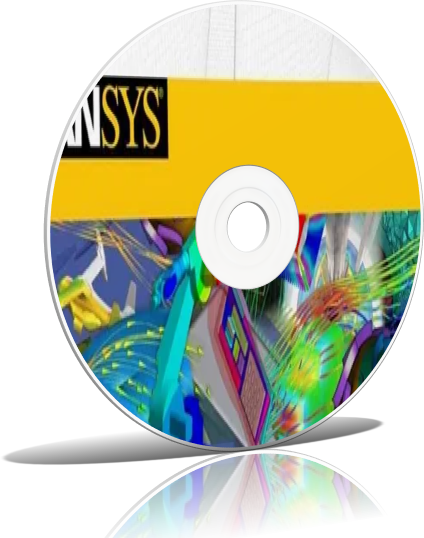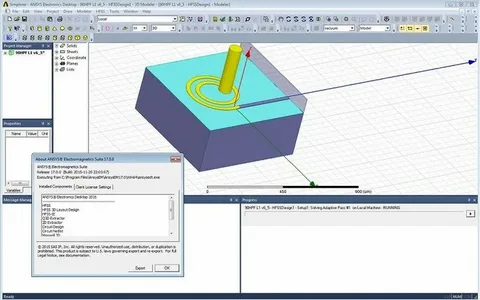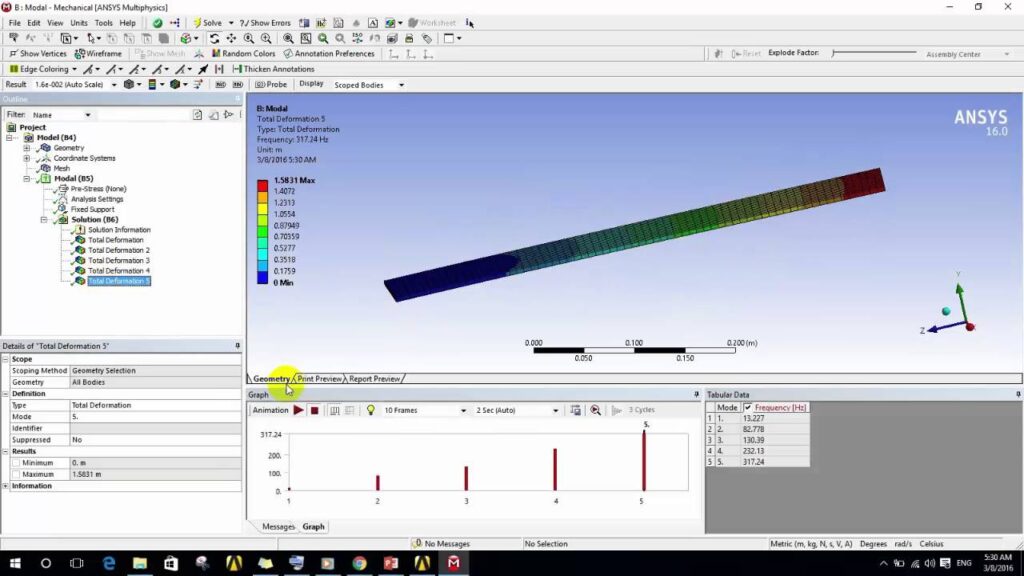Ansys 17.2 software free download with crack 64 bit
ANSYS 17.2 is a powerful simulation software that has become a staple among engineering and research professionals. This comprehensive suite of tools allows users to analyze and optimize the performance of their designs, helping to ensure the success of their projects.
Overview
Whether you’re working on complex fluid dynamics simulations, intricate structural analyses, or cutting-edge electromagnetic studies, ANSYS 17.2 has the capabilities to meet your needs.
One of the standout features of this software is its ability to seamlessly integrate with a wide range of CAD platforms, making it a versatile choice for designers and engineers working across multiple disciplines. The intuitive user interface and powerful solver capabilities make ANSYS 17.2 a must-have tool for anyone serious about advancing their work.
Features
- Multiphysics Simulation: ANSYS 17.2 excels at handling complex, multiphysics simulations, allowing users to analyze the interactions between different physical phenomena, such as structural, thermal, and electromagnetic effects.
- Fluid Dynamics Analysis: The software’s advanced computational fluid dynamics (CFD) capabilities enable users to model and simulate fluid flow, heat transfer, and other related phenomena with unparalleled accuracy.
- Structural Analysis: ANSYS 17.2 offers powerful tools for structural analysis, including linear and nonlinear stress analysis, modal analysis, and fatigue life prediction, helping users to ensure the structural integrity of their designs.
- Electromagnetic Simulation: The software’s electromagnetic simulation capabilities allow users to analyze and optimize the performance of electrical and electronic components, including antennas, motors, and power systems.
- Optimization and Parametric Studies: ANSYS 17.2 includes advanced optimization and parametric study features, enabling users to explore the design space and find the most optimal solution for their specific needs.

Technical Specifications
- Version: ANSYS 17.2
- Interface Language: English
- Audio Language: English
- Uploader/Repacker Group: N/A
- File Name: ANSYS_17.2_Crack_64-bit.exe
- Download Size: 8.2 GB

System Requirements
- Operating System: Windows 7, 8, 10 (64-bit)
- Processor: Intel Core i5 or AMD Ryzen 5 (or higher)
- RAM: 8 GB or more
- Graphics Card: NVIDIA GeForce GTX 1050 or AMD Radeon RX 560 (or higher)
- Storage: 20 GB of available disk space
Adjusting Graphics Settings
- Open the ANSYS Workbench and navigate to the “Tools” menu.
- Select “Options” and then go to the “Graphics” tab.
- Adjust the settings based on your system’s hardware capabilities, such as the resolution, anti-aliasing, and texture quality.
- Click “OK” to save the changes and apply the new graphics settings.

Troubleshooting Common Issues
- Missing DLL Files: If you encounter any missing DLL errors, try reinstalling the software or downloading the necessary DLL files from a trusted source.
- Compatibility Issues: Ensure that your system meets the minimum requirements and that you’re running the 64-bit version of the software on a compatible operating system.
- Licensing Problems: If you’re experiencing issues with the software’s licensing, contact the ANSYS support team for assistance.
Download and Installation
- Visit the official ANSYS website or a trusted software download portal and locate the ANSYS 17.2 free download with crack for 64-bit systems.
- Download the installation file and save it to your computer.
- Run the installation file and follow the on-screen instructions to complete the installation process.
- Once installed, launch the ANSYS Workbench and enter the activation code or crack to unlock the full functionality of the software.

Using ANSYS 17.2
- Open the ANSYS Workbench and select the type of simulation you want to perform, such as Fluid Dynamics, Structural Analysis, or Electromagnetic Analysis.
- Import your CAD model or geometry and define the necessary boundary conditions, material properties, and other simulation parameters.
- Run the simulation and analyze the results using the various post-processing tools available in the software.
- Optimize your design by adjusting the parameters and re-running the simulation until you achieve the desired performance.
For more information and resources, you can visit the following websites:
- Frezsa – Offers a detailed overview of ANSYS 17.2 and its features.
- Qruma – Provides a step-by-step guide on how to download and install the ANSYS 17.2 crack.
- Mrafb – Shares in-depth reviews and comparisons of ANSYS 17.2 with other simulation software.
- Deffrent – Outlines the system requirements and hardware specifications for ANSYS 17.2.
- Toreef – Offers tutorials and guides on using the various features and functionalities of ANSYS 17.2.
- Gulvezir – Provides troubleshooting tips and solutions for common issues with ANSYS 17.2.
- Flex44d – Showcases user reviews and feedback on the performance and usability of ANSYS 17.2.
- AACPI – Shares case studies and real-world applications of ANSYS 17.2 in various industries.


Leave a Reply